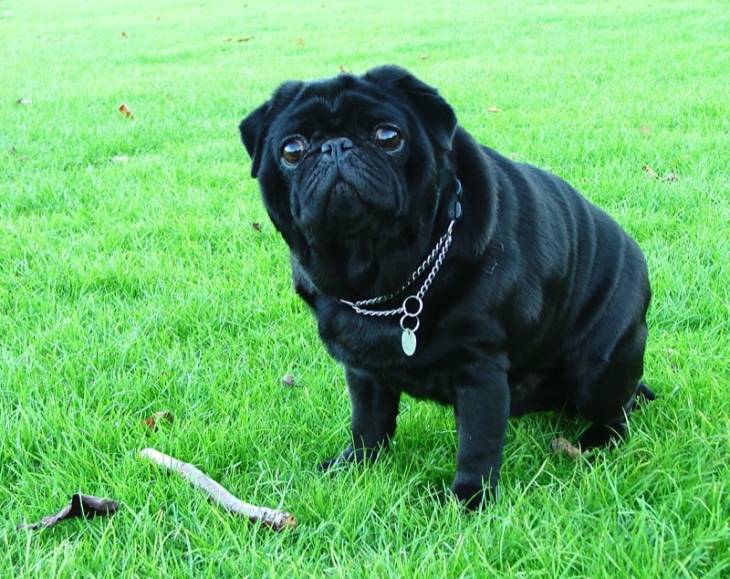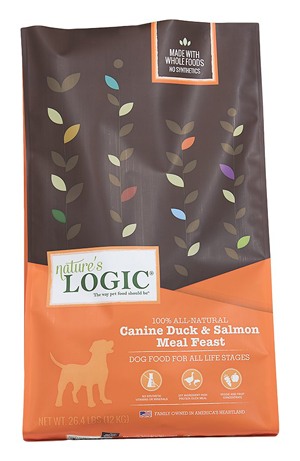The Best Dog Food For Pugs (Chow for a Lap Dog)
These affectionate, playful, and charming lap dogs are as well-known for their classic features as they are for their loving personality. But what is the best dog food for pugs? Feeding them a nutritional, well-balanced diet is super-important—which is why we decided to do the research for you!
Quick Picks: Top Pug Food Options
**There's more info below, but you can also click the links above to see current prices or read customer reviews on Chewy.
**Disclaimer: Our dog food reviews are based mostly on (1) our expertise and that of the experts with whom we consult and (2) the information provided by the manufacturers. We do test many dog foods (with our dog's help), but we can't test them all. As such, please remember the above recommendations are our opinions, and you should consult your vet before making changes to your dog's diet.
A Snapshot of the Breed: Pugs
Pugs may have one of the most distinctive faces in the dog world. They have deep wrinkles around their large, flat noses—and big, dark eyes. They’re playful pets who love to be the center of attention, and enjoy games and playtime. In fact, they can get quite ‘heartsick’ if they don’t receive enough love and affection from their human owners!
Pugs are a bit of a ‘royal canine’ in their own right. They date back to the Han Dynasty in China, and were prized pets of the Emperors. During the 1500-1600s, they were brought to Europe through trade routes, and quickly became popular in many royal households.
Contrary to what many may believe, the Pug is neither a hunting dog nor a guard dog. They were actually bred to be companions, and do a very good job of it! They’re most at home on the lap of their favorite human, and tend to be pretty laid-back. They don’t necessarily need to move around a lot—which makes them ideal apartment-dwellers.
What Are a Pug's Calorie Requirements?
**Please note: these estimates are based on an average weight for this breed. Every dog is different. Please talk to your vet before making changes to your dog's diet.
Pugs generally grow to be about a foot tall, weigh somewhere between 14 and 18 pounds, and live to be 12 to 15 years of age. They’re relatively lazy when sitting around the house—but this inactivity quickly fades when they become the center of attention!
Less active Pugs will require around 400 calories per day to stay fueled and energized, while those who are moderately active will require a bit more—somewhere closer to 500.
If your pug tends to be highly active, you might find that his/her daily caloric needs can reach numbers as high as 775 calories or more. Of course, no two dogs are the same—so make sure that you pay attention to how much food your dog eats and how active he/she tends to be.
If your dog never finishes its food or seems to gain a lot of weight, you might want to back off on the calories a little bit, and vice-versa.
20% off at chewy.com
On ALL dog food.
Some More Great Info...
Online videos are a great place to learn about Pugs. This particular video covers basic information about the breed, and will help you to determine if a Pug might be the right pet for you.
Common Pug Health Problems
Pugs are a pretty healthy breed overall—but just like any other animal, they do tend to deal with a few basic health problems that owners need to watch out for. Here’s a list of some of the most common ailments to affect this affectionate, attention-loving canine.
Walking Dandruff (Cheyletiella Dermatitis)
This condition is, according to this article on Petmd.com, “a highly contagious, zoonotic skin parasite that feeds on the keratin layer of the skin — the outer layer — and on tissue fluid of the top layer.” This ‘infestation’ is similar to fleas, and is often treated with the same products.
Some symptoms may include excessive scratching, visible scaling of the skin, lesions on the back, underlying skin irritation, and dandruff.
While this condition can be cured with the proper treatment, dogs predisposed to such ailments will require a diet rich in nutrients to maintain healthy skin. A dogfood that contains sufficient amounts of Omega 6 fatty acids will probably do the most good.
Nerve Degeneration
Pugs that are older may incur problems with basic mobility. Some Pugs, for example, might begin to have trouble jumping, drag their rear-ends while moving around, ‘stagger’ while walking, or face other similar ‘motor-skill’ issues. This could be the result of nerve degeneration, which is unfortunately not all that uncommon in older Pugs.
According to this article, published on dogsnaturallymagazine.com, a diet rich in polyunsaturated fats can help to prevent or delay the onset of nerve degeneration in older dogs—the most important of which is Omega 3 (from fish oil).
Eye Problems and Conditions
Due to the unusual shape and size of the Pug’s eyes, they’re prone to a number of different eye conditions and problems. Proptosis, distichiasis, PRA, dry eye, and entropion are all possibilities that could affect your Pug at one point or another.
Basic eye health is essential for this breed—which is why a diet complete with proper nutrients is essential. Ingredients like blueberries, carrots, cold water fish, eggs, and pumpkin are awesome for keeping the eyes healthy and functioning properly.
For more information on eye health for your dog, you can read this article on animalwellnessmagazine.com.
How to Feed a Pug Puppy

Pugs start the weaning process between the ages of 4-6 weeks. During this time, the pup can start eating puppy food, and will probably end up partaking of a diet consisting of both kibble and mother’s milk until he/she is successfully weaned.
During this time, the puppy still won’t quite be ready to leave his/her brothers, sisters, and mother. This is a crucial period of socialization, and will teach the puppy a lot about interacting with other animals. By the time the puppy is 7 to 8 weeks old, it should be just about ready to leave the mother’s nest and join its human family.
The typical Pug puppy will weigh about 3 pounds at the 8 week mark, and will require about 140 calories a day to stay energized. A highly-active pup might need a bit more though—and daily caloric intake could be as high as 275 calories or more for a Pug of this age.
What Is the Best Dog Food For Pugs?
This is a very important question. Like any other dog, Pugs need adequate nutrition to stay healthy, happy, and energetic. They need the right kinds of foods to get them through the day, and require a well-rounded diet with plenty of vitamins and minerals to keep them looking and feeling great—which is why we recommend Nature’s Logic Dry Duck and Salmon Meal Canine Formula for Pugs from all walks of life.
As you probably know, there are a lot of high-quality dog foods on the market nowadays—but Nature’s Logic Dry Duck and Salmon simply stands out from the crowd (in our opinion, anyway). This high-quality, nutrient-filled dog food contains a number of vital components that are critical to the Pug’s health.
It contains Pumpkin Seed, which is an ingredient that’s rich in Omega 6 fat—a critical component that’ll help to maintain a pug's skin health. It also contains Salmon Meal. Salmon is an awesome source of Omega 3 fat, which can help to prevent and/or prolong the onset of nerve degeneration in breeds that are predisposed to it (like Pugs).
And last, but certainly not least—this formulation includes a ton of ingredients that promote better eye health—all of which the Pug desperately needs to keep his/her eyes healthy and functioning at their maximum potential. Some of these include Pumpkin Seed, Blueberry Powder, Broccoli Powder, Carrot Powder, and Dried Egg Product.
If you'd like a second opinion, here's a fantastic Nature's Logic review from our friends at Dog Food Guru.
Pros and Cons
- Features Omega 3 and 6 fats, which promote skin and nerve health
- Contains several ingredients that support eye health
- Natural and 100% gluten-free
- Contains alfalfa nutrient concentrate, which some consider a controversial ingredient
- While it can be ordered online, it could be tough to purchase locally
If you’re looking for a top-notch, five-star dog food that’ll keep your Pug healthy, happy, and feeling awesome, then you’re definitely going to be impressed with Nature’s Logic Dry Duck and Salmon Meal Canine Formula. It’s packed with flavors that your Pug will love, and filled with enough probiotics, enzymes, fruits, vegetables, protein, and pure animal ingredients to impress even the pickiest of dog owners. If you haven’t tried Nature’s Logic yet, then Iwould definitely recommend it.
Image credit: Amazon.com, https://www.flickr.com/photos/helenmcdonald/


